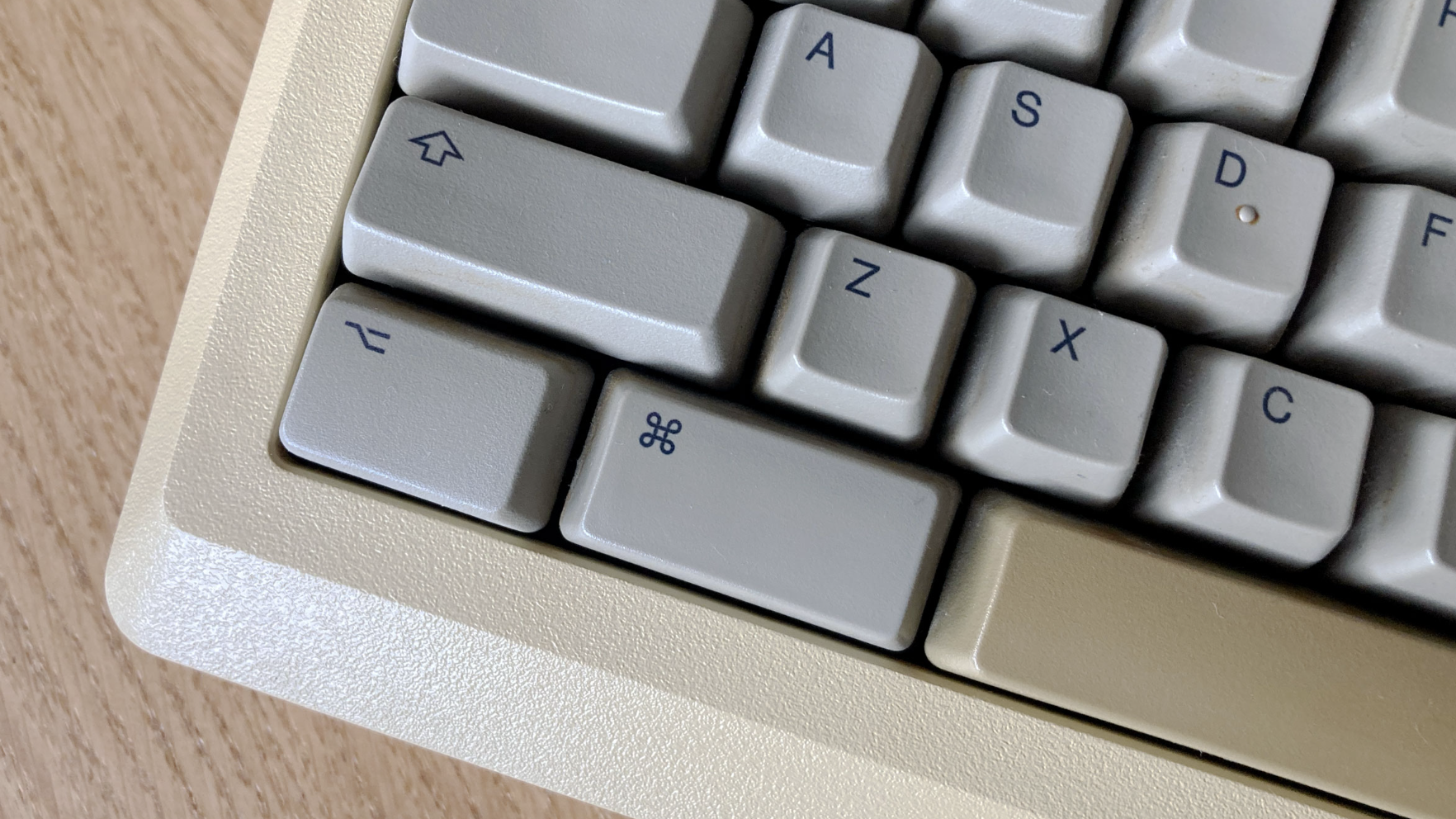The Command key, recognizable by its looped square symbol (⌘), is a staple for Mac users worldwide. Beyond its modern functionality, this seemingly simple key boasts a fascinating history. Delving into the command key history reveals its journey from ancient Scandinavian origins to its iconic role in Apple’s technology.

Ancient Origins: The Symbol’s Early Use in Europe
The Command key’s symbol, also known as the St. John’s Arms or the Bowen knot, holds a significant place in European cultural and religious heritage. Over the centuries, this symbol has transcended time, appearing in various forms and contexts. Notably, Nordic countries have a rich history of using this symbol, often incorporating it into ancient artifacts like stones, textiles, and wooden carvings. People believed this symbol possessed protective qualities, capable of warding off evil spirits and ensuring safe travels. For instance, archaeologists discovered a picture stone in Havor, Gotland, dating between 400-600 AD, which indicates the symbol’s long-standing presence in Scandinavian culture.
Moreover, as time passed, the symbol found its way into heraldry. It became a common design element on coats of arms and family crests. Heraldic terms refer to it as the Bowen knot, a design representing loyalty, protection, and strength. Its symmetrical and continuous loop design made it visually striking and easily recognizable. Additionally, its strong visual appeal contributed to its longevity and widespread usage across different cultures and eras. This timeless symbol continues to resonate today, bridging ancient traditions with modern interpretations.

From Nordic Road Signs to Apple Keyboards
The symbol’s journey, starting with ancient artifacts and ending on modern keyboards, took a significant turn in the 20th century. During this period, Nordic countries adopted the symbol as a road sign. Specifically, they used it to indicate sites of cultural or historical interest. This symbol guided travelers to places of importance and curiosity. Moreover, its application was based on its connotation of significance and its visually appealing, non-intrusive design. The looped square even resembled a castle with towers at each corner when viewed from above, making it an ideal choice for marking landmarks.
Transitioning to the early 1980s, Apple faced a design challenge while preparing to launch the Macintosh. At first, the Macintosh keyboards featured an Apple logo on what was then called the “Apple key” or “Open Apple key.” This key functioned similarly to how modern Windows keyboards use the Windows logo key. However, Steve Jobs, Apple’s co-founder, began to express concerns about overusing the Apple logo. Specifically, he worried that its presence in functional contexts might dilute its brand power. Consequently, he sought a distinct, non-Apple symbol to denote the Command key across the Macintosh interface.

Susan Kare and the Birth of the Command Key
Susan Kare, a pioneering graphic designer at Apple, faced the task of finding a suitable replacement for the Apple logo on the command key. Immediately, she understood the importance of this decision. Kare, who played an instrumental role in developing the visual language of the original Macintosh, knew that this symbol would need to be both distinctive and meaningful. As she searched for inspiration, she turned to a dictionary of symbols. During her search, she came across a familiar looped square symbol used on Scandinavian road signs.
Recognizing its simplicity, distinctiveness, and historical connotations, Kare proposed it as the new Command key symbol. The team, seeing the potential of this symbol, quickly adopted it. With this decision, the Command key as we know it today was born. Consequently, this marked a significant evolution in Apple’s design, intertwining ancient symbols with modern technology.
Subsequently, over the centuries, this symbol migrated into heraldry, gracing coats of arms and family crests. In heraldic terms, it was commonly referred to as the Bowen knot, a design symbolizing loyalty, protection, and strength. Furthermore, its symmetrical and continuous loop design rendered it visually captivating and easily identifiable, thereby contributing to its enduring popularity and extensive usage.

The Command Key’s Role in Modern Computing
The Command key quickly became integral to the Macintosh experience. It functions much like the Control key on Windows keyboards, allowing users to execute keyboard shortcuts that save time and streamline various tasks. For instance, from copying and pasting to opening files and navigating applications, the Command key remains central to the efficiency of macOS operations. Moreover, its placement on Apple keyboards, including those for iPads and MacBooks, underscores its importance in Apple’s ecosystem.
Furthermore, beyond its functionality, the Command key symbolizes Apple’s commitment to thoughtful design. The choice of this particular symbol reflects a desire to create an interface that is both aesthetically pleasing and meaningful. Consequently, the Command key is more than just a button; it represents how ancient symbols can be repurposed and recontextualized in modern technology to enhance user experience.
Additionally, this key serves as a bridge between history and innovation. As a result, it holds significance not just as a functional tool but as a design element that carries cultural and historical weight. Therefore, every time users press the Command key, they engage with a piece of history embedded within their modern technology, making their interactions with Apple devices both efficient and enriched with meaning.

The Command Key in Popular Culture and Beyond
Interestingly, the Command key has made its mark in popular culture. In fact, its unique symbol has become an icon in its own right. People often use it in design, art, and media to evoke connections with technology and modern computing. Moreover, the symbol’s inclusion in the Unicode standard as U+2318 ensures its recognition across various digital platforms. As a result, it further embeds itself into the fabric of global digital culture.
Additionally, the Command key’s symbol, known in some circles as the “fornminne” (ancient monument) in Swedish or “seværdighedstegn” (landmark) in Danish, has retained its cultural significance in the Nordic countries. Therefore, it continues to serve as a visual bridge between the past and the present. By linking historical heritage with cutting-edge technology, it embodies a timeless connection that resonates with many.

Conclusion: A Legacy of Design and Functionality
The history of the Command key clearly demonstrates the enduring power of symbols and highlights the crucial role of design in shaping our interactions with technology. From its origins as a protective emblem in ancient Europe, the Command key’s symbol has journeyed through time, consistently finding new relevance in each era. Moreover, Susan Kare’s decision to incorporate this ancient symbol into Apple’s interface exemplifies how thoughtful design can create connections between users and technology. This design approach ensures that these connections are both functional and emotionally resonant.
Today, as we continue to rely on the Command key for countless tasks, it serves as a powerful reminder of Apple’s design philosophy. This key is more than just a productivity tool; it is a symbol that blends history, culture, and innovation. Therefore, it reflects how the past can inform and enrich the present, creating a user experience that is both efficient and meaningful.
Related Posts:
7 Fundamental Principles of Icon Design
Unveiling the Magic: UI vs. UX Design
